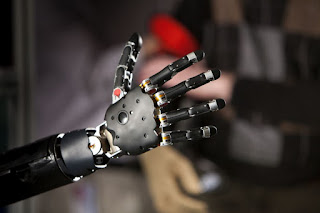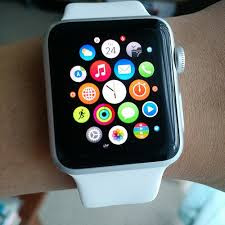Amputated musician manages to play piano with innovative prosthesis
Researchers have managed to create a hand prosthesis with sensors allowing the wearer to control each finger individually. An innovation that allowed an amputated musician with his right hand to play the piano again.
It is believed to come straight out of the famous Star Wars saga and the panoply of Luke Skywalker, yet this bionic hand does exist. It is the brainchild of scientists from the Georgia Institute of Technology in the United States and this invention may one day help revolutionize the lives of amputees.
In recent years, the world of prostheses has made remarkable progress. While amputees previously had to rely on aesthetic prostheses that were not very useful for replacing the missing limb, the researchers managed to develop much more advanced devices that could replace some of the lost functions.
In the laboratories, today they are true bionic members who are being tested to allow amputees to walk or catch objects for example, only with the control of their thought. Many challenges remain, however, and the finesse of the control of these devices is one of them.
It is on this aspect that the Georgia Institute of Technology team has focused. After much research, she has now managed to develop an ultrasound sensor that allows the wearer of a hand prosthesis to control each finger individually. "Our prosthetic arm is powered by ultrasound signals," said Gil Weinberg, who is leading the project.
"By using this new technology, the arm can detect which finger an amputee wants to move even if he has no fingers," he continued. The prosthesis in question is not controlled by the mind. Like most current devices, it uses electromyogram (EMG) sensors attached to the wearer's muscles. The relaxation or contraction of these muscles generates electrical signals that allow to operate the robotic hand.
Until now, the problem was that "the EMG sensors are not very precise, they can detect a muscular movement but the signal is too" noisy "so that it is possible to deduce which finger the person can move", detailed Gil Weinberg. "We tried to improve EMG detection, but we could not get finger-to-finger control."
The shift came when researchers came up with the idea of ??pairing the prosthesis with an ultrasound probe, the same type of device that doctors use to watch a baby in the womb. They then found that when the amputee tested wanted to move his ring finger, the muscle movements picked up by the probe differed from when another finger was concerned.
From there, the team used an algorithm to associate each movement and thus the ultrasound signals to the finger concerned and the result was very conclusive. Thanks to the ultrasound signals and the algorithm, the device is now able to detect the continuous and simultaneous movements of each finger, as well as the amount of force that the wearer wants to use.
Gil Weinberg and his colleagues had their innovation tested by a 28-year-old amputee, Jason Barnes, who lost his right forearm in 2012 after a workplace accident. "It's totally amazing.This new arm allows me to make the shots I want, on the fly, without having to switch modes or press a button.I never thought we could do that. day, "he said in a statement.
In a video relayed by the Georgia Institute of Technology, the musician delivers an impressive demonstration where he can be seen playing the piano with his robotic hand. In fact, it has been several years since Jason Barnes collaborated with researchers at the Georgia Institute of Technology.
In 2014, they had already designed a first device with two sticks to play the drums. The musician could then control one of the chopsticks while the other moved independently and improvised according to the music. And the demonstration was already impressive.
The new scheme, however, opens up much wider perspectives. "If this type of arm can work for music and something as subtle and expressive as playing the piano, this technology can also be used for other types of fine motor activities like washing or eating." concluded Gil Weinberg.
It is believed to come straight out of the famous Star Wars saga and the panoply of Luke Skywalker, yet this bionic hand does exist. It is the brainchild of scientists from the Georgia Institute of Technology in the United States and this invention may one day help revolutionize the lives of amputees.
In recent years, the world of prostheses has made remarkable progress. While amputees previously had to rely on aesthetic prostheses that were not very useful for replacing the missing limb, the researchers managed to develop much more advanced devices that could replace some of the lost functions.
In the laboratories, today they are true bionic members who are being tested to allow amputees to walk or catch objects for example, only with the control of their thought. Many challenges remain, however, and the finesse of the control of these devices is one of them.
Inadequate control
It is on this aspect that the Georgia Institute of Technology team has focused. After much research, she has now managed to develop an ultrasound sensor that allows the wearer of a hand prosthesis to control each finger individually. "Our prosthetic arm is powered by ultrasound signals," said Gil Weinberg, who is leading the project.
"By using this new technology, the arm can detect which finger an amputee wants to move even if he has no fingers," he continued. The prosthesis in question is not controlled by the mind. Like most current devices, it uses electromyogram (EMG) sensors attached to the wearer's muscles. The relaxation or contraction of these muscles generates electrical signals that allow to operate the robotic hand.
Until now, the problem was that "the EMG sensors are not very precise, they can detect a muscular movement but the signal is too" noisy "so that it is possible to deduce which finger the person can move", detailed Gil Weinberg. "We tried to improve EMG detection, but we could not get finger-to-finger control."
Controlled finger by finger
The shift came when researchers came up with the idea of ??pairing the prosthesis with an ultrasound probe, the same type of device that doctors use to watch a baby in the womb. They then found that when the amputee tested wanted to move his ring finger, the muscle movements picked up by the probe differed from when another finger was concerned.
From there, the team used an algorithm to associate each movement and thus the ultrasound signals to the finger concerned and the result was very conclusive. Thanks to the ultrasound signals and the algorithm, the device is now able to detect the continuous and simultaneous movements of each finger, as well as the amount of force that the wearer wants to use.
Gil Weinberg and his colleagues had their innovation tested by a 28-year-old amputee, Jason Barnes, who lost his right forearm in 2012 after a workplace accident. "It's totally amazing.This new arm allows me to make the shots I want, on the fly, without having to switch modes or press a button.I never thought we could do that. day, "he said in a statement.
Play drums and piano
In a video relayed by the Georgia Institute of Technology, the musician delivers an impressive demonstration where he can be seen playing the piano with his robotic hand. In fact, it has been several years since Jason Barnes collaborated with researchers at the Georgia Institute of Technology.
In 2014, they had already designed a first device with two sticks to play the drums. The musician could then control one of the chopsticks while the other moved independently and improvised according to the music. And the demonstration was already impressive.
The new scheme, however, opens up much wider perspectives. "If this type of arm can work for music and something as subtle and expressive as playing the piano, this technology can also be used for other types of fine motor activities like washing or eating." concluded Gil Weinberg.




Comments
Post a Comment